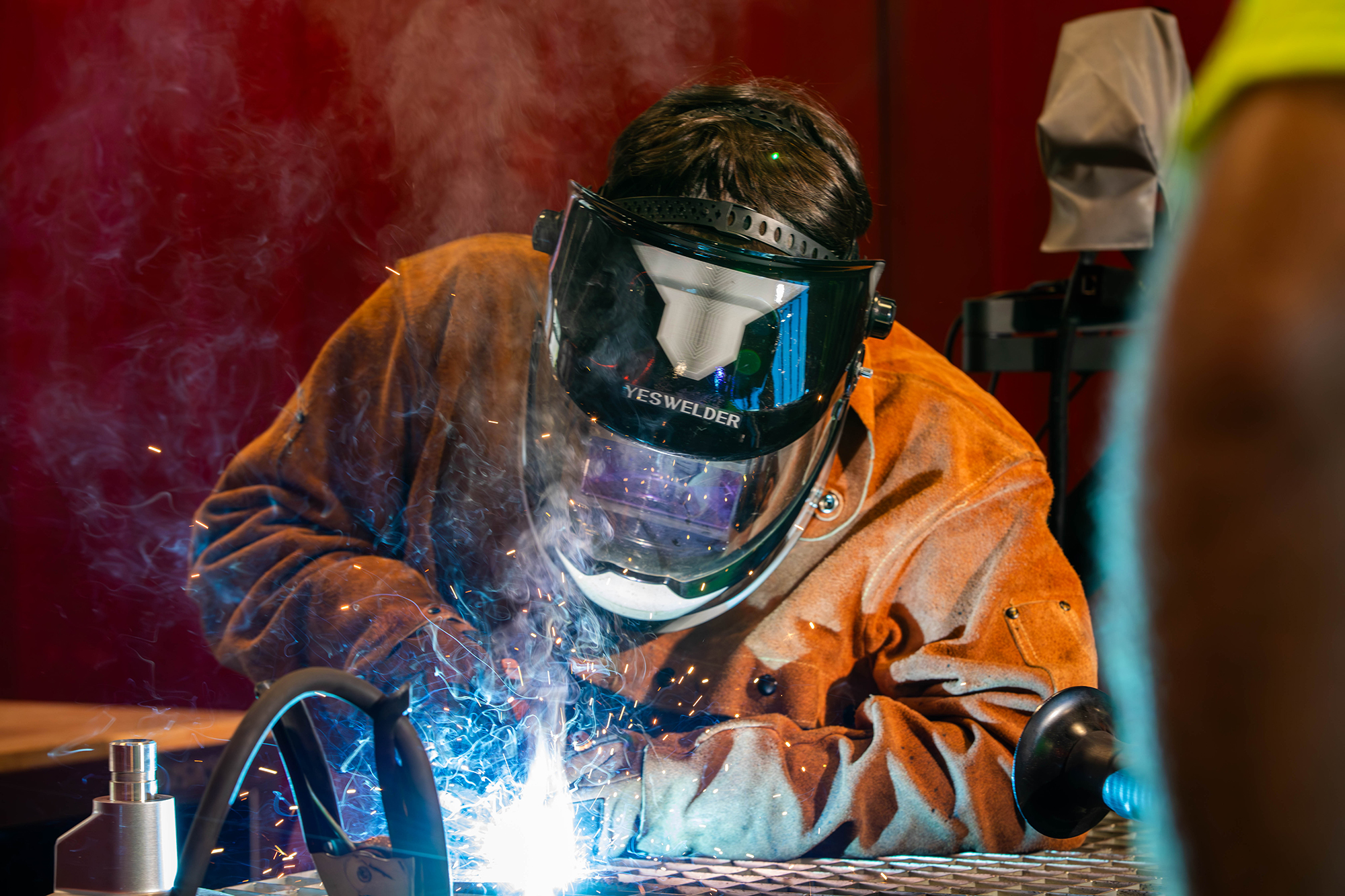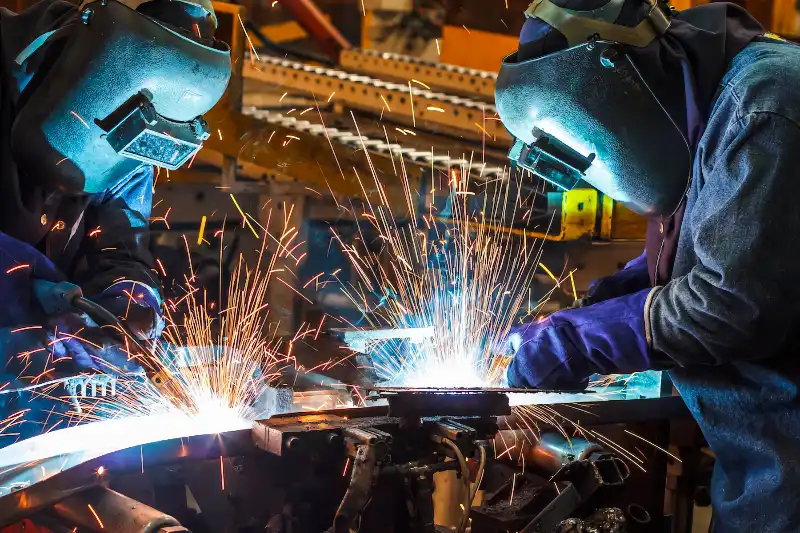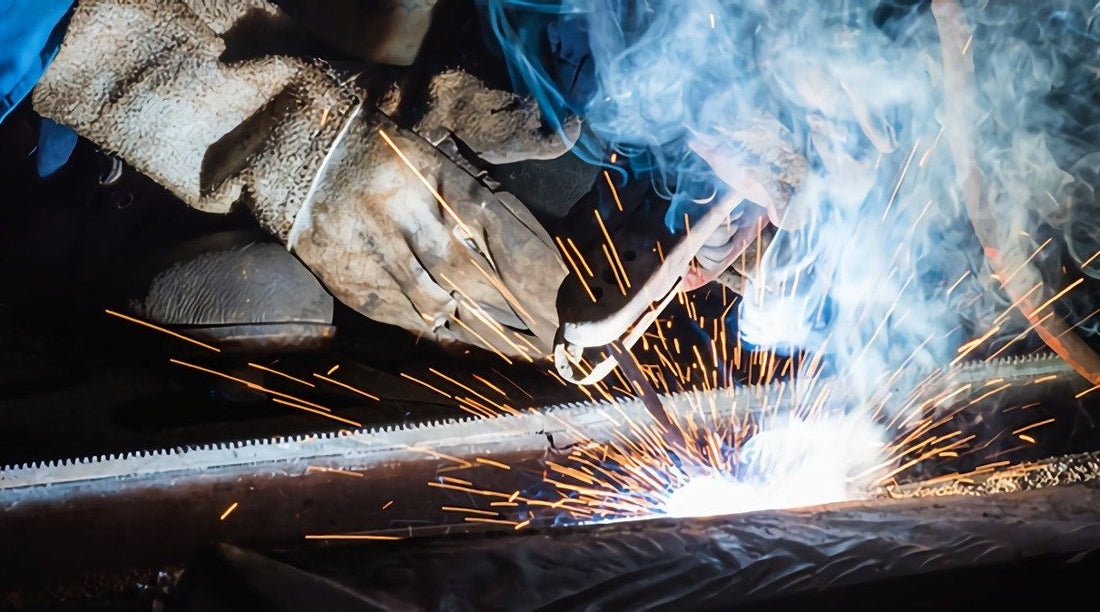Fast fixes to weld misalignment in Montana Mobile Welding and Repair Fabrication
Common Welding Repair Work Issues and Just How to Address Them Effectively
Welding repair work frequently encounter a variety of issues that can jeopardize the stability of the last product. Typical issues include insufficient penetration, porosity, and misalignment, to name a few. Each defect offers distinct challenges that need particular techniques for resolution. Recognizing these issues is essential for welders aiming to improve their end results and skills. This conversation will certainly explore these typical welding repair concerns and effective approaches to resolve them.
Insufficient Penetration
Poor penetration occurs when the weld metal fails to completely fuse with the base material, leading to weak joints and prospective architectural failings. This issue frequently comes from insufficient warmth input, incorrect electrode angle, or improper welding rate. Welders might come across poor penetration due to a mistake of the required specifications for a specific material density or kind. Additionally, contamination on the base material's surface area can hinder reliable bonding, intensifying the problem. To attend to poor infiltration, welders should guarantee appropriate setups on their equipment and keep a clean work surface. Routine examination of welds is recommended to determine any type of deficiencies early, enabling for prompt adjustments and the prevention of compromised architectural honesty in welded settings up.
Porosity
Porosity is an usual flaw in bonded joints that materializes as tiny gas bubbles trapped within the weld metal. This defect can jeopardize the integrity of the weld, bring about decreased strength and prospective failure under stress and anxiety. Montana Mobile Welding and Repair Belgrade. Porosity typically occurs from contamination, wetness, or inappropriate welding methods, which permit gases to get away right into the liquified weld pool. To resolve porosity, welders must assure proper surface prep work, keep a tidy workplace, and utilize ideal welding specifications. Additionally, selecting the best filler material and protecting gas can minimize gas entrapment. Routine inspection and screening of welds can aid recognize porosity early, assuring prompt rehabilitative activities are taken, consequently maintaining the top quality and integrity of the welded framework
Imbalance
Imbalance in welding can develop from different elements, including inappropriate setup and thermal growth. Recognizing the source is essential for efficient resolution. Numerous adjustment techniques are offered to realign elements and guarantee structural stability.
Root causes of Imbalance
Welding imbalance typically comes from a variety of underlying problems that can compromise architectural stability. One primary reason is inappropriate fit-up of components before welding, which can result in voids and unequal surface areas. Variants in thermal development throughout the welding procedure can likewise result in distortion, specifically if the materials being joined have various coefficients of development. Additionally, insufficient fixturing and securing might fall short to hold components firmly in position, resulting in motion throughout welding. Poorly maintained equipment, consisting of welding machines and devices, might introduce inconsistencies in the weld grain, more contributing to misalignment. Operator error, stemming from inadequate training or experience, can also play a substantial duty in creating misaligned welds.

Correction Methods Readily Available
Dealing with misalignment successfully calls for a combination of restorative strategies customized to the details problems at hand. One usual approach is the usage of components or jigs to hold elements in the proper setting throughout welding, making certain constant placement. In addition, pre-heating the materials can assist reduce distortion and improve fit-up. For considerable misalignment, mechanical adjustment methods, such as making use of hydraulic jacks or clamps, can be used to remedy the setting before welding. Post-weld warm therapy may additionally be essential to ease tensions created by imbalance. Careful evaluation and modification throughout the configuration phase can protect against misalignment issues from ending up being considerable issues, advertising a smoother welding procedure and improving overall structural stability.
Distortion
Distortion is an usual challenge in welding that can emerge from different aspects, consisting of irregular cooling and heating. Comprehending the sources of distortion is crucial for implementing reliable prevention techniques. Resolving this problem not only improves structural honesty but additionally enhances the general top quality of the weld.
Sources of Distortion
When based on the intense warmth of welding, products often undergo changes that can bring about distortion. This phenomenon primarily arises from thermal expansion and contraction during the welding process. As the weld location warms up, the material expands; upon cooling, it acquires, which can create interior stress and anxieties. Furthermore, irregular heating throughout a workpiece can exacerbate these stress and anxieties, causing bending or flexing. The sort of material also plays a significant role; metals with varying thermal conductivity and coefficients of expansion may react differently, causing unpredictable distortions. Bad joint layout and poor fixturing can add to misalignment during welding, increasing the probability of distortion. Comprehending these reasons is necessary for effective welding fixing and prevention approaches.
Avoidance Techniques
Effective prevention techniques for distortion during welding emphasis on managing heat input and ensuring appropriate joint layout. Preserving a consistent heat input helps to minimize thermal growth and tightening, which can lead to distortion. Using strategies such as pre-heating the work surface can additionally decrease the temperature slope, advertising consistent home heating. Additionally, picking appropriate joint designs, such as T-joints or lap joints, can boost stability and lower stress focus. Executing appropriate fixturing to secure the work surfaces in position even more help in maintaining positioning during the welding process. Staggered welding sequences can distribute warmth a lot more equally, stopping local distortion. By applying these strategies, welders can considerably lower the probability of distortion and boost the general top quality of their welds.
Cracking
Fracturing is a common problem run into in welding repair work, frequently resulting from different variables such as incorrect air conditioning prices, product selection, or poor joint prep work. The incident of cracks can significantly compromise the honesty of the weld, resulting in possible failings throughout procedure. To address this problem, welders need to initially evaluate the source, ensuring that materials work and suitably selected for the specific application. Furthermore, regulating the air conditioning rate during the welding procedure is vital; quick air conditioning can generate stress and anxiety and bring about cracking. Appropriate joint layout and preparation also contribute to decreasing the threat. Executing these approaches can improve weld high quality and sturdiness, ultimately reducing the probability of fracturing in completed weldments.

Insufficient Fusion
A considerable problem in welding repair services is incomplete blend, which happens when the weld steel does not properly fillet weld bond with the base material or previous weld passes - Montana Mobile Welding and Repair. This issue can cause weak points in the joint, possibly compromising the honesty of the welded framework. Elements adding to insufficient combination include not enough warm input, page inappropriate welding method, and contamination of the surfaces being joined. To address this problem properly, welders must guarantee proper pre-weld cleansing and surface area prep work, in addition to change their welding specifications to accomplish adequate penetration and combination. Normal examination throughout the welding process can likewise help identify incomplete fusion early, enabling timely corrective procedures to improve the overall top quality of the weld
Overheating
While welding repairs can improve structural stability, overheating offers a considerable obstacle that can result in product destruction. Excessive heat throughout welding can modify the mechanical residential properties of steels, resulting in decreased stamina, enhanced brittleness, and bending. This sensation is particularly critical in high-stress applications where architectural reliability is critical. Identifying overheating can involve aesthetic inspections for discoloration or distortion, along with keeping an eye on temperature during the welding procedure. To reduce the threats connected with overheating, welders must utilize proper methods, such as regulating heat input, adjusting traveling speed, and utilizing suitable filler products. Furthermore, applying pre- and post-weld warmth therapies can aid bring back material properties and enhance the general high quality of the fixing, ensuring long-term efficiency and safety.
Often Asked Inquiries
What Are the Usual Indications of a Welding Defect?

Just How Can I Evaluate My Welds for High quality?
To why not try these out evaluate welds for high quality, one can utilize aesthetic examinations, ultrasonic screening, and radiographic approaches. Each technique assures architectural stability, identifies issues, and validates adherence to specified requirements, inevitably enhancing the integrity of the bonded joints.
What Safety and security Preventative Measures Should I Take While Welding?
When welding, one must focus on safety by using proper personal protective devices, making sure correct air flow, safeguarding combustible materials away, maintaining a clean workspace, and recognizing surroundings to avoid mishaps and injuries.
Can I Repair a Weld Without Redesigning the Entire Joint?
Repairing a weld without redoing the entire joint is feasible, depending upon the damages (Fabrication). Techniques such as grinding, including filler material, or utilizing a welding procedure can successfully attend to certain problems while preserving the bordering structure
What Tools Are Vital for Effective Welding Fixes?
Important tools for effective welding repair services consist of a welding machine, cable brush, mill, safety equipment, clamps, and filler materials. Each device plays an essential role in guaranteeing quality and safety during the fixing process. Porosity generally develops from contamination, wetness, or inappropriate welding techniques, which permit gases to escape right into the liquified weld swimming pool. Improperly kept equipment, consisting of welding machines and tools, may present inconsistencies in the weld bead, more adding to misalignment. When subjected to the intense warm of welding, materials typically undergo modifications that can lead to distortion. Breaking is a typical issue experienced in welding repair work, commonly resulting from different aspects such as improper air conditioning prices, material choice, or insufficient joint preparation. A considerable issue in welding repairs is insufficient fusion, which takes place when the weld steel does not effectively bond with the base product or previous weld passes.